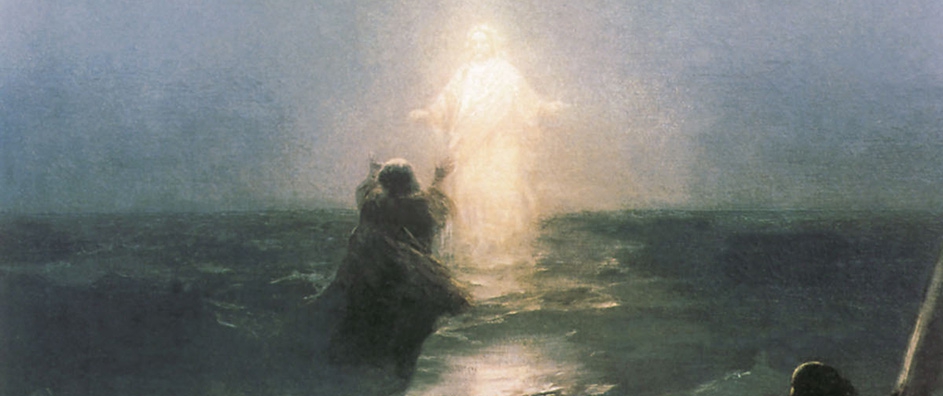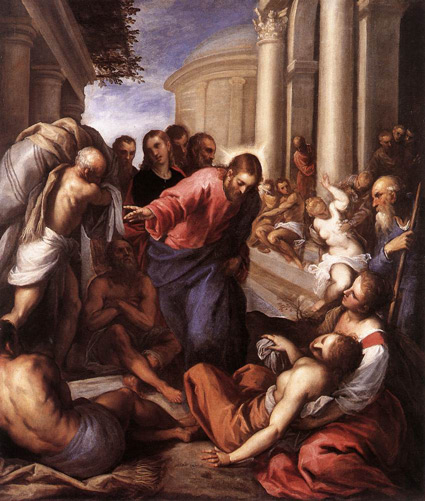The views expressed in our content reflect individual perspectives and do not represent the authoritative views of the Baha'i Faith.
Let’s consider the miracle stories in the Gospels.
We have clear evidence that they grew more miraculous even in the small passage of time from when the Gospel of Mark was written (about 70 AD) to when Matthew and Luke were written (about 90 AD). Mark’s gospel records that Jesus cursed a tree, and that when his disciples returned a day later they found that it had withered (Mk 11:1321). Just twenty years later, Matthew cannot wait a day, and had the tree wither immediately when Jesus cursed it (Mt 21:19).
Mark records one instance of feeding many from the loaves and fishes (Mk 3:7). Matthew’s Gospel records two (Mt 14:21, 15:38). Mark notes that all who were diseased and possessed in a village were brought to Jesus and that he healed many. Matthew records that many were brought and all were healed (Mk 1:3234 and Matthew 8:16).
Mark records an instance when a boy was brought to Jesus after his disciples could not heal him (Mark 9:1429). Jesus rebuked the spirit in the boy which then rent the boy, before it left him exhausted on the ground. Jesus lifted the boy up and helped him to his feet. He did not assure the boy’s father that the cure had been successful, and he later explained to his disciples that this sort of malady could only be cured by prayer and fasting.
By contrast, Matthew’s account of the same incident (17:1418) indicated that Jesus’ cure was instantaneous and permanent. Further, he had Jesus rebuke his disciples that they could not heal the boy because their faith was too small. In a similar story in Mark, Jesus rebuked a spirit and it struggled in the victim awhile before it fled. In Matthew’s version, the cure was instantaneous. Matthew even omitted instances when the cure was either affected by administering some physical agent or in which the cure was not immediate, no doubt, because the cure was not miraculous enough (see Mk 7:31 and 8:22).
Lastly, consider the difference between Mark’s account of Jesus walking on water and Matthew’s. In Mark, Jesus sets his disciples in a boat while he goes to pray. Late at night he comes toward his disciples walking on the water (Mark 6:45-52). His disciples think it is a ghost, but he speaks to them to calm them and gets into the boat. Mark then adds that the disciples were dumbfounded because their minds were closed and they had not understood the incident of the loaves (more on this point later). Matthew’s gospel, and his alone (it’s not in Luke), adds another sequence of events. He has Peter in the boat, call to Jesus on the water saying: “Lord if it is you, tell me to come to you over the water.” Jesus did so, and Peter began to walk over the water until he was frightened by the gale and suddenly began to fall into the water. Jesus saved him and both Prophet and disciple suddenly found themselves in the boat. But if it happened, why would Mark omit this account? Maybe Matthew ,or others prior to him, added the story to make a point about constancy of faith. Many Christian scholars have noted these and other exaggerations in Matthew.
The real cause for concern about Matthew’s exaggerations is not just that we should be cautious in accepting Matthew’s version; it is whether our concern should extend to worry about Mark’s account. There is no reason to believe that the stories that Mark received had not already been exaggerated. Mark was not an eyewitness to the ministry of Jesus. He was writing the accounts at least thirty years after the death of Jesus, and the stories he received had been passed through many hands and tongues before he received them. It is also quite likely that Mark may have given these stories a writer’s boost.
It is not Matthew alone who inflated stories to make them miraculous. Consider the story of Lazarus found in both the Gospels of Luke and John. In Luke, Jesus told a parable of a poor man named Lazarus who lived by a rich man’s gate. Both men died and were judged. Lazarus got to go to heaven and stood by Abraham; the rich man went to hell. But the rich man in hell saw Abraham and Lazarus across the chasm and asked Abraham to have Lazarus bring him some water because he was burning. Abraham told the rich man that no such thing was possible as none can cross the chasm that separates heaven from hell. The rich man then begged Abraham to send Lazarus to warn his living brothers to repent. Abraham replied: “If they do not listen to Moses and the prophets they will pay no heed even if someone should rise from the dead.” In John’s gospel there is also a story of Lazarus, rising from the dead. Scholars wonder if the story in Luke is actually the origin of the story that John embellished to make miraculous (see Lindars, The New Century Bible Commentary: The Gospel of John, 1972. p. 386). Indeed, many of the elements are the same, only in Luke it is a parable, and in John it is reported as a miracle.
Baha’is believe that many stories of faith have been told as parables, myths and allegorical tales. To read them literally, the Baha’i teachings suggest, is to mistake their meaning for something real rather than something symbolic:
The obstacle which prevents the so-called religious man from accepting the teachings of God is literal interpretation… Let us awake! Let us acquire a new intelligence in order to interpret the symbols and become acquainted with the mysteries. Man has a sacred power which permits him to discover the inner significances, the reality of invisible things. Ponder over these statements, so that the portals of divine wisdom and infinite knowledge may open before thy face… The holy books are full of significance and must never be taken literally. – Abdu’l-Baha, Divine Philosophy, pp. 35-38.

















Comments
Sign in or create an account
Continue with Googleor